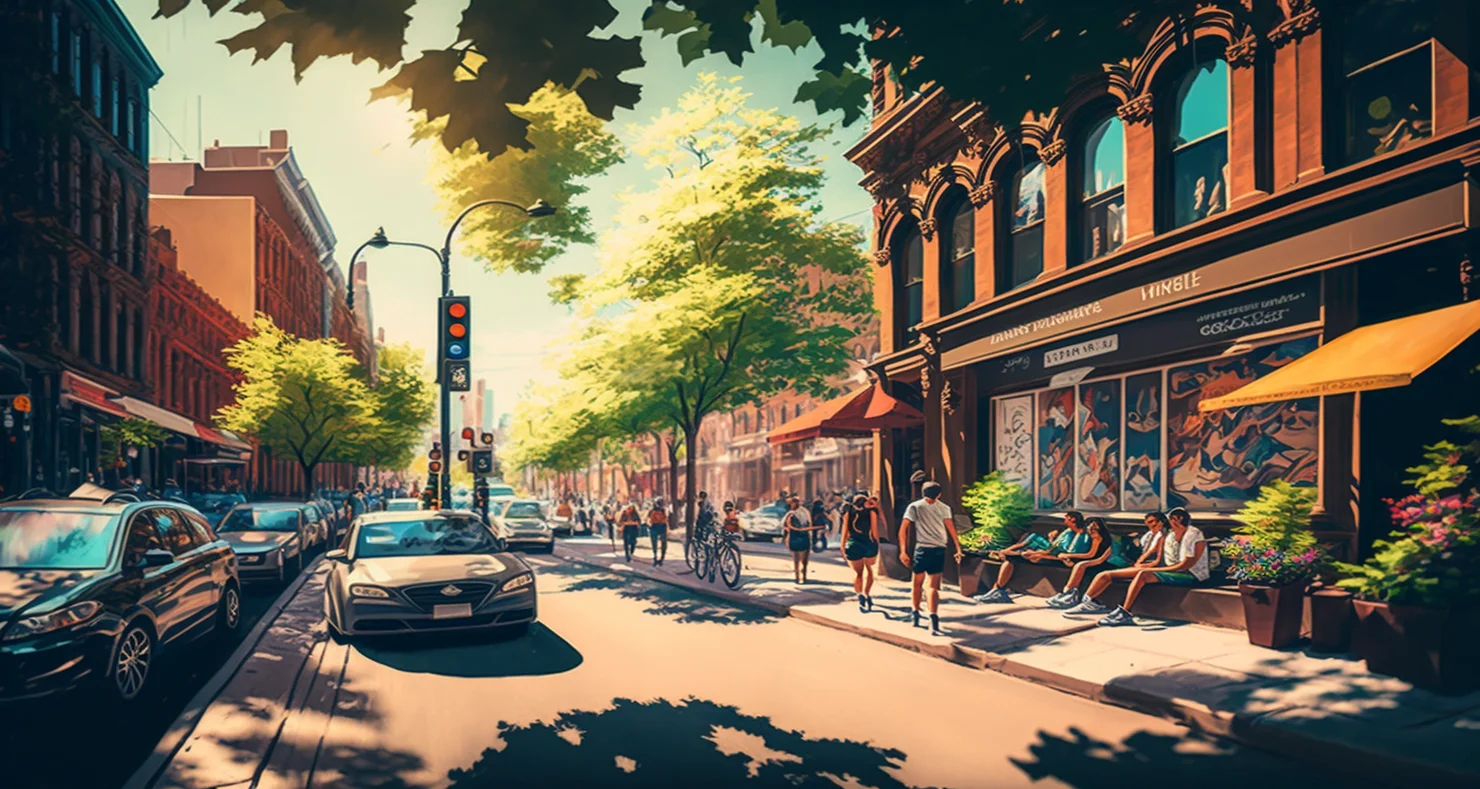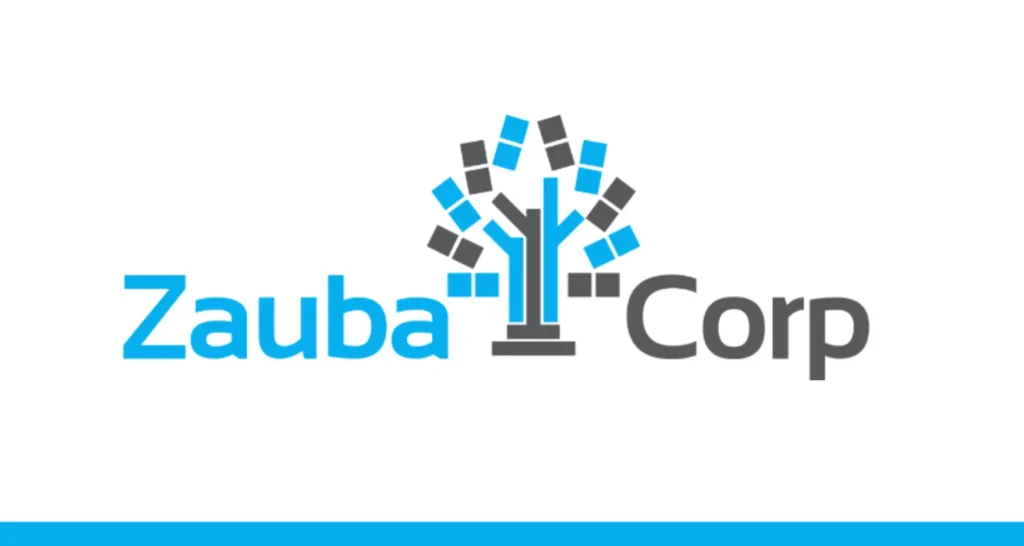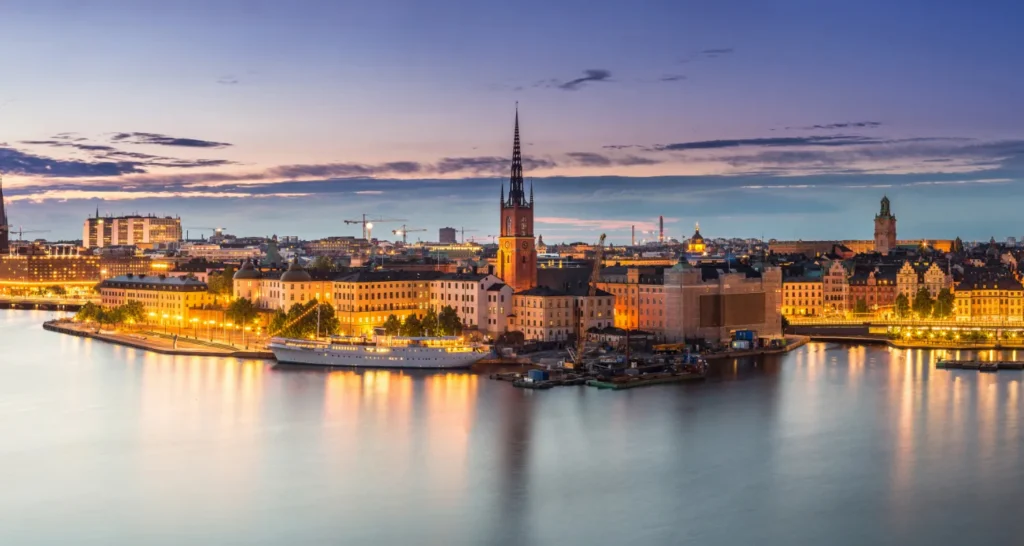Montreal’s smart city strategy is focused on using technology and innovative solutions to improve the quality of life of its residents, enhance sustainability, and increase economic growth. The Montrea smart city strategy includes projects such as a smart traffic management system, autonomous shuttles, and energy-efficient lighting. Montreal has also won the Smart City Challenge, a competition that encourages cities to use technology to improve livability, workability, and sustainability, and has used the prize money to fund additional smart city initiatives. The Montreal smart city strategy has helped it to attract new investment and talent, and position itself as a leader in smart city technology and innovation.
Montréal smart city is the largest city in Canada’s Québec province. It’s set on an island in the Saint Lawrence River and named after Mt. Royal, the triple-peaked hill at its heart. Its boroughs, many of which were once independent cities, include neighborhoods ranging from cobblestoned, French colonial Vieux-Montréal – with the Gothic Revival Notre-Dame Basilica at its center – to bohemian Plateau.
Montréal smart city strategy
Montreal has been investing in smart city technology and innovative solutions to improve the quality of life of its residents and create a more sustainable and resilient city. Here are some examples of implemented projects, future plans, interesting facts, project names, and statistics of achievements:
Implemented Projects:
BIXI: Montreal’s bike-sharing program has become one of the most successful in the world, with over 10 million rides taken each year. BIXI features a network of over 7,000 bicycles and 600 stations throughout the city.
Smart Traffic Management: Montreal has implemented a smart traffic management system that uses real-time data to optimize traffic flow and reduce congestion. The system has reduced travel times by up to 20% on certain routes.
Smart Waste Management: Montreal has implemented a smart waste management system that uses sensors to optimize collection routes and reduce the number of waste trucks on the road. The system has reduced the number of trucks on the road by up to 50%.
Future Montreal smart city strategy:
Smart Lighting: Montreal plans to deploy energy-efficient LED streetlights that use sensors to adjust lighting levels based on traffic and pedestrian activity. This will result in a reduction in energy consumption and will save the city millions of dollars in electricity costs.
Autonomous Transportation: Montreal is planning to test autonomous shuttle buses in the coming years to improve public transportation services and reduce congestion.
Open Data Platform: Montreal is developing an open data platform that will enable city officials and residents to access and analyze data on city services and infrastructure.
Interesting Facts:
Montreal is home to the largest underground city in the world, with over 32 kilometers of tunnels connecting buildings, metro stations, and shopping centers.
Montreal has been named one of the most intelligent communities in the world by the Intelligent Community Forum.
Montreal is a leader in sustainable development, with over 500 green roofs and the largest urban park in Canada.
Project Names and Statistics of Achievements Montreal smart city strategy:
Eco-Districts: Montreal has implemented several eco-districts, including the Quartier des Spectacles, which features energy-efficient buildings, green spaces, and smart transportation systems. The eco-districts have reduced greenhouse gas emissions by over 20%.
Innovation District: The Montreal Innovation District is a hub for technology and innovation, with over 75,000 employees and over 600 companies. The district has generated over $13 billion in economic activity.
Smart City Challenge: Montreal won the Smart City Challenge in 2017, a competition organized by the federal government to encourage the development of smart cities. The city received $50 million to fund projects aimed at improving mobility, public safety, and sustainability.
In addition to these projects, Montreal is using the prize money to invest in smart city research and development, to create new jobs in the technology sector, and to engage with citizens and community groups to ensure that smart city initiatives are implemented in a way that benefits all residents.
The Montreal smart cities challenge victory has helped to attract new investment and talent to the city and has positioned it as a global leader in smart city technology and innovation.
Sectors of Development
Whether it’s a transportation and sustainable mobility, information technology, or life sciences, you can find out which fast-growing industries and markets are good sectors for starting a business in Montreal. The many real estate projects under development in Montreal represent an exceptional opportunity to plan the city of tomorrow. The City of Montreal intends to play an important role, in particular by:
- establishing a coherent overall vision of the development of sectors surrounding major projects
- defining priority interventions
- coordinating the operations required for their development
- supporting promoters of real estate projects, in accordance with the governance framework for large-scale projects
Strategic sectors
The strategic planning sectors have for the most part been determined by the Montreal Urban Planning and Development Plan. In addition to the city center, these sectors have been designated because of their strategic location near major road and public transport infrastructure, existing or planned, their accommodation capacity, and the great possibility of transformation in order to ” intensify and diversify urban activities and natural environment teaching approach.
Several strategic planning procedures are undertaken by the City of Montreal to ensure consistency in these sectors and to capitalize on their respective strengths. The City is thus preparing future urban projects by:
- carrying out the studies and analyses required to establish the portrait and characterization of the sector;
- formulating the vision and principles of enhancement;
- proposing a planning and development scenario as well as the main interventions;
- developing the planning document to frame and implement the transformation of the sector;
- establishing a concerted approach with its partners and stakeholders.
This vision document, the main lines of which were presented by the City during the public consultation conducted by the STM on the project, presents its vision to guide and inject urban renewal in this part of eastern Montreal.
Smart City Montreal, Canada
2.956 Smart Points

Environment
Mobility
Connectivity
Ecology
Life quality
Citizens
Government
Average
Montreal smart city strategy Vision Zero
The Vision Zero approach is an approach that Sweden adopted in 1997. The approach, which has been implemented in many large cities around the world, is based on the principle that “it is unacceptable that people are killed or seriously injured when they are traveling on the road network”.
What actions will you take to make a commitment to safety?
- By obeying all speed limits, concentrating on my driving, and not using cell phones or other electronic devices.
- By traveling on the streets in a predictable way and sharing the road with other users.
- By crossing intersections at the right time and at pedestrian crossings if I am on foot.
- By using caution near heavy vehicles and making sure I am not in their blind spot.
- By not driving under the influence of alcohol or drugs.
- By sharing my commitment with my network.
- By recognizing that my actions can cause collisions and my behavior in the street can affect the lives of others.
Actions based on safe mobility
- Create a Vision Zero-dedicated team and fill seven additional positions for the implementation of the action plan.
- Create a Vision Zero governing committee, made up of the most influential road safety partners.
- Instate a team for the analysis of fatal collisions and traffic deaths.
- Publish a yearly “Montréal road safety report” to track safe systems approach by applied behavior analysis.
- Work on the 3 major themes: street crossing; heavy-duty vehicles, and speed management.
- Improve coordination of awareness campaigns.
- Improve training for professional drivers.
- Develop better tools to analyze collisions and their impact on the population.
- Implement a “Program to improve safety in school zones”.
- Improve existing bike paths and develop the réseau express vélo.
- Add more digital-timer pedestrian traffic lights.
- Improve lighting for walkways under bridges and overpasses.
- Research in the area of Autonomous vehicle adoption plan
- Avoid deaths and serious injuries on roads.

Montreal smart city strategy Natural environments
In addition to the large bodies of water that surround Montreal, the agglomeration is home to a mosaic of diversified natural environments, made up of woods, fallow land, wetlands, and interior watercourses. These habitats, which are favorable to biodiversity, are largely located in the Network of large parks of Montreal, but also elsewhere in the territory, especially in the private domain.
The presence of nature in the city is of great benefit to the citizen. Among other things, it helps reduce the effects of urban heat islands, improve air quality, and improve the aesthetics of neighborhoods. Montreal parks, many of which have ecological value, allow outdoor activities that promote both physical and psychological health. The increased presence of nature near the place of residence, work, or study is increasingly recognized as a significant aspect of quality of life.
In a highly urbanized city like Montreal, where space is limited and development pressures are strong, reconciling the imperatives of development and conservation is an important issue, in order to preserve our natural heritage for current generations and the future.
Policy for the protection and enhancement of natural environments
Adopted in 2004, the Policy aims to increase the protected area, ensure the sustainability of natural environments, maximize biodiversity, and promote the integration of ecosystems and natural landscapes into living environments. It thus aims to increase the contact spaces between citizens and nature, while respecting the ecological integrity of these unique sites in urban areas.
Like the Québec Strategy on Protected Areas, the Policy has established a protection objective of 8% of the entire agglomeration, and 6% of the “terrestrial” surface (including wetlands and yards of indoor water). As the agglomeration’s territory includes part of the large bodies of water that surround the island of Montreal (Saint-Laurent river, Prairies river, Saint-Louis lake, Deux-Montagnes lake), the objective of 8 % is reached. Indeed, more than 17% of the agglomeration is currently protected if we take into account the protected areas included in these large bodies of water, which are under the jurisdiction of the federal or provincial government as the case may be.
Consequently, in order to maximize the impact of the Policy, interventions focus on achieving the objective in a “terrestrial” (or interior) environment, where reconciling development and conservation represents a major issue. The recommended approach is a consultation with all stakeholders (citizens, NGOs, landowners, municipal and government representatives, etc.) in order to promote broad support for projects arising from the Policy.
Ecological network diagram Ten eco-territories (territories conducive to the creation of protected areas) have been identified in particular. The conservation projects undertaken there are based on the ecological network model, which includes:
- core areas, centers of biodiversity
- protective buffer zones;
- corridors allowing the dispersal and migration of species between core areas.
Thanks to the efforts deployed, Montreal achieved its objective in 2015, which is to protect 6% of the territory inside the agglomeration’s lands. The target has now been adjusted to 10%, in order to continue preserving areas of ecological interest, as indicated in the Montreal Land Use and Development Plan.
Canada natural environment teaching network
The Canada Natural Environment Teaching (NET) Network is a collaborative community of educators, naturalists, and other professionals who are dedicated to promoting environmental education and connecting people with nature. The network provides resources, training, and support to educators across Canada to help them integrate environmental education into their teaching practices.
The Canada NET Network is part of a larger global network of environmental education organizations and advocates for the importance of environmental education in fostering a sustainable future for our planet. The network provides opportunities for educators to connect with each other, share ideas and resources, and collaborate on projects that promote environmental education in their communities.
The Canada Natural Environment Teaching (NET) Network has several goals, including:
Promoting environmental education: The network aims to promote environmental education and raise awareness about the importance of connecting people with nature.
Supporting educators: The network provides training, resources, and support to educators across Canada to help them integrate environmental education into their teaching practices.
Fostering collaboration: The network fosters collaboration among educators, naturalists, and other professionals to promote environmental education and connect people with nature.
Encouraging outdoor learning: The network encourages outdoor learning and provides resources to help educators take their students outside and engage with nature.
Advocating for the environment: The network advocates for the environment and promotes policies and initiatives that support environmental education and conservation.
Overall, the goal of the Canada NET Network is to promote environmental literacy and inspire Canadians to take action to protect and conserve our natural environment and improve the lives of Canadian citizens.
Montréal smart city strategy and climate change
Global warming is no longer a debate in the scientific community. In Quebec, average annual temperatures have increased by about 1 to 3 °C since 1950. In Montréal, weather observations indicate an increase in average temperatures, warmer and more humid nights, and heavy rainfalls. The City is implementing initiatives to reduce greenhouse gas (GHG) emissions and adapt to climate change.
GHG Emissions Reduction
In 2005, Montréal committed to reducing citywide GHG emissions by 30% before 2020 compared to the reference year (1990). As a municipal government, Montréal aims to position itself as a role model for the citywide community in reducing GHG emissions. That is why, in 2005, the city committed to reducing municipal activities’ GHG emissions by 20% before 2012 compared to 2002. This objective was achieved in 2010. In 2013, Montréal took another commitment to reduce municipal activities’ GHG emissions by 30% before 2020.
To achieve these targets, Montréal has developed several tools, including two reduction plans that propose measures targeting mainly the transportation and stationary energy sectors (residential, commercial, industrial, and institutional). Many observations were made on these sectors in the progress reports carried out in 2017. The objective of this exercise was to determine whether or not it is necessary to revise the plan’s objectives based on the observations made in 2017 and the evolution of Montréal’s citywide GHG emissions sources.

Smart City Montreal international commitments
Montreal considers the fight against climate change as one of its priorities and wants to position itself as a world leader. To do so, the city participates in various innovative initiatives like the Carbon Disclosure Project (CDP), the Global Covenant of Mayors, and C40.
In December 2015, the Montréal administration has endorsed the declaration from the Climate Summit for Local Leaders held in Paris as part of COP21. Among other things, this commitment aims to reduce the citywide’s GHG emissions by 80% for 2050, a target included in the Sustainable Montréal 2016-2020 Plan, with an intermediate target for 2030, so that local governments overall reduce GHG emissions by 3.7 Gt beyond national commitments.
Montréal endorsed the Chicago Climate Charter in December 2017 and the Edmonton Declaration in June 2018. The city will be attending the upcoming San Francisco Global Action Climate Summit.
Montréal is adapting to climate change
In November 2015, Montreal adopted its first Climate Change Adaptation Plan for the Montréal Urban Agglomeration 2015-2020. This first plan highlights Montreal’s vulnerabilities to climate change and the observed and anticipated impacts on the population, infrastructure, the natural environment, and all activities taking place on the island. It also presents all the commitments made by the agglomeration to cope with these climatic events.
With this adaptation plan, Central Departments, the boroughs, and the municipalities have made many ambitious commitments. The measures announced are announcing aim, among other things, to reduce heat islands, protect biodiversity, manage runoff water, increase infrastructure resilience, and adopt new practices in regard to the range of recreational activities on offer, to name just a few.
Montreal smart city strategy Community gardens
Do you want to grow your own vegetables? The allocation of gardens (community gardens) on the territory of Montreal smart city strategy is the responsibility of each of the 19 boroughs. Montreal invites you to consult the list of boroughs and the map of the gardens where information sheets by borough explain the procedure to follow. Happy gardening!
Rules about bees
When it comes to bees and beekeeping, the provincial regulations apply Bee Owners Registration Regulations and Animal Health Protection. In Montreal, a regulation prohibits the use of pesticides outside buildings. A framework municipal by-law is in force, it is declined by the arrondissement. The search by the district in the 311 / Pesticides Information Bank will adequately inform you.

Research on urban trees
The urban forest is rightly regarded as a living and dynamic component of municipal infrastructure. Urban trees are the guarantors of a quality environment, and of the air we breathe, especially in cities creates the effect of real life feeling. Given the value of its forest heritage valued at more than $ 1 billion, the significant resources dedicated to its maintenance, the Montreal smart city strategy has undertaken to carry out applied research projects on urban trees.
Goals :
- Safeguarding and improving Montreal’s tree heritage;
- Optimization of the growing conditions of trees in street alignments;
- Greater efficiency in the management of urban trees.
- Knowing the urban forest well necessarily involves building inventories. The development of georeferenced IT tools is part of research aimed at planting “the right tree in the right place”. Past experience has made it possible to collect inventory data by airborne and ground lasers.
Research is specifically focused on creating growth indices to define stress classes for trees in alignment, using artificial intelligence algorithms.
The municipal nursery serves as an experimental space for the analysis of the root systems of trees planted along the streets. Researchers from the Arboriculture Division are evaluating the conditions for root development to determine optimal conditions for the survival of street trees. This research demonstrates that the expansion of tree planting pits to 5 m3 and the quality of the soil used to have an impact on the longevity of trees planted in unfavorable areas such as downtown arteries. We are also looking into the development of a new soil mixture to limit compaction problems in sidewalk squares.
Other research focuses on the consequences of deicing salts on street trees, or on the analysis of transplant shock, depending on the size and the species planted.
This research benefits from grants from the City of Montreal and in part from the Natural Sciences and Engineering Research Council of Canada.













